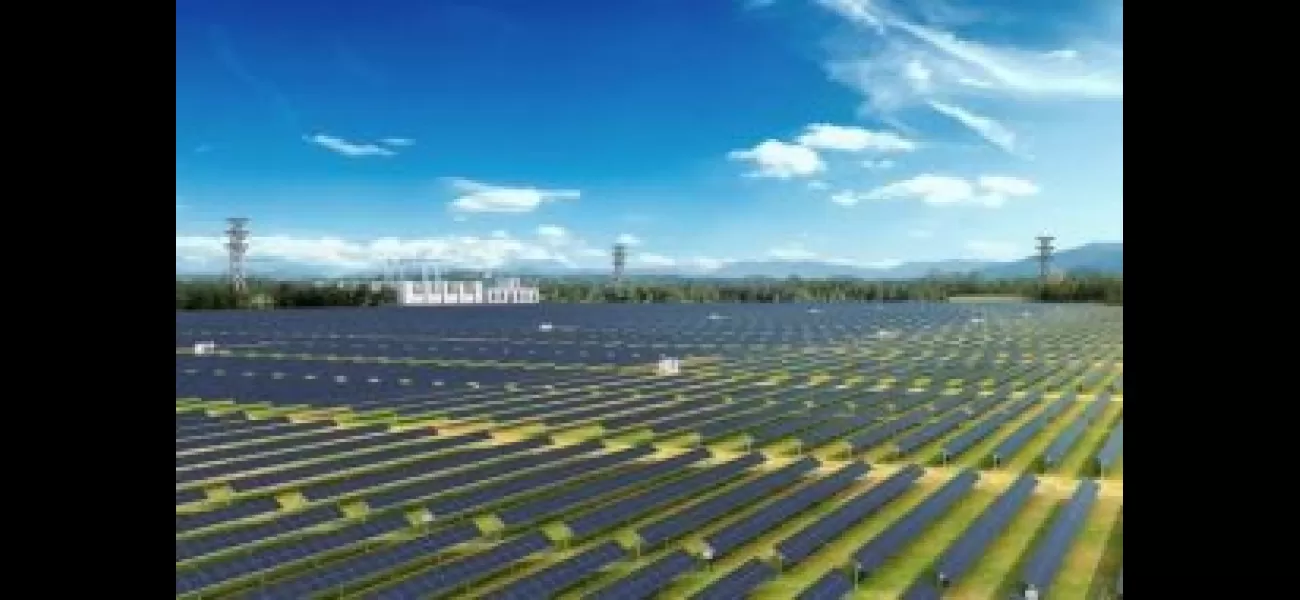India surpassed Japan as the world's 3rd biggest solar power producer in 2023.
India has surpassed Japan to become the world's third-largest solar power producer by rapidly increasing its solar energy deployment, according to a new report.
May 8th 2024.

India has made significant strides in solar energy deployment, surpassing Japan to rank as the world's third-largest solar power generator by 2023. This impressive feat was reported by global energy think tank Ember, which also noted that India had ranked ninth in solar energy deployment in 2015.
The report also highlighted the global trend of solar energy, with it producing a record 5.5% of the world's electricity in 2023. India followed suit, generating 5.8% of its electricity from solar last year, as stated in Ember's "Global Electricity Review". Ember's Asia Programme director, Aditya Lolla, emphasized the importance of increasing clean electricity not just for reducing carbon emissions, but also for meeting the growing demand for electricity in an increasingly electrified economy. This shift is crucial for tackling climate change and decoupling economic growth from emissions.
The impressive growth of solar energy has continued for 19 consecutive years, making it the world's fastest-growing electricity source. In 2023, it added more than twice the amount of new electricity compared to coal. India was among the top four countries with the largest increase in solar generation, coming after China, the United States, and Brazil. Together, these four countries accounted for 75% of the global growth in solar energy in 2023.
Ember's report also highlighted the enormous growth of solar energy globally, with 2023 seeing six times more solar generation than in 2015. In India, solar's contribution to electricity generation increased from 0.5% in 2015 to 5.8% in 2023. Looking towards the future, the International Energy Agency's "Net Zero Emissions" scenario predicts that solar will make up 22% of global electricity generation by 2030.
India has set ambitious goals to fight climate change, including a commitment to achieving 50% cumulative electric power installed capacity from non-fossil fuel-based energy resources by 2030. This goal is crucial, as electricity generation accounts for nearly half of India's annual carbon dioxide emissions. Accelerating the transition to cleaner generation sources is imperative for the country to meet its developmental and climate goals.
At the United Nations' COP28 climate change conference in December last year, world leaders made a historic agreement to triple the global renewable energy capacity by 2030. The International Energy Agency has stated that this increase, along with doubling energy efficiency, is crucial for limiting the average temperature rise to 1.5 degrees Celsius, a political target set in 2015 to prevent further worsening of climate impacts.
India is one of the few countries planning to triple its renewable capacity by 2030. However, Ember's analysis shows that annual capacity additions need to significantly increase for India to meet this target. With the country's commitment to fighting climate change and its impressive growth in solar energy, it is well on its way to achieving a cleaner and more sustainable future.
The report also highlighted the global trend of solar energy, with it producing a record 5.5% of the world's electricity in 2023. India followed suit, generating 5.8% of its electricity from solar last year, as stated in Ember's "Global Electricity Review". Ember's Asia Programme director, Aditya Lolla, emphasized the importance of increasing clean electricity not just for reducing carbon emissions, but also for meeting the growing demand for electricity in an increasingly electrified economy. This shift is crucial for tackling climate change and decoupling economic growth from emissions.
The impressive growth of solar energy has continued for 19 consecutive years, making it the world's fastest-growing electricity source. In 2023, it added more than twice the amount of new electricity compared to coal. India was among the top four countries with the largest increase in solar generation, coming after China, the United States, and Brazil. Together, these four countries accounted for 75% of the global growth in solar energy in 2023.
Ember's report also highlighted the enormous growth of solar energy globally, with 2023 seeing six times more solar generation than in 2015. In India, solar's contribution to electricity generation increased from 0.5% in 2015 to 5.8% in 2023. Looking towards the future, the International Energy Agency's "Net Zero Emissions" scenario predicts that solar will make up 22% of global electricity generation by 2030.
India has set ambitious goals to fight climate change, including a commitment to achieving 50% cumulative electric power installed capacity from non-fossil fuel-based energy resources by 2030. This goal is crucial, as electricity generation accounts for nearly half of India's annual carbon dioxide emissions. Accelerating the transition to cleaner generation sources is imperative for the country to meet its developmental and climate goals.
At the United Nations' COP28 climate change conference in December last year, world leaders made a historic agreement to triple the global renewable energy capacity by 2030. The International Energy Agency has stated that this increase, along with doubling energy efficiency, is crucial for limiting the average temperature rise to 1.5 degrees Celsius, a political target set in 2015 to prevent further worsening of climate impacts.
India is one of the few countries planning to triple its renewable capacity by 2030. However, Ember's analysis shows that annual capacity additions need to significantly increase for India to meet this target. With the country's commitment to fighting climate change and its impressive growth in solar energy, it is well on its way to achieving a cleaner and more sustainable future.
[This article has been trending online recently and has been generated with AI. Your feed is customized.]
[Generative AI is experimental.]
0
0
Submit Comment





